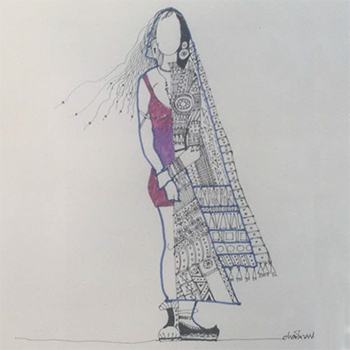The term "ethnic" has a lot of importance in this fashion industry. This term has a lot of importance today. Its origin lies in the traditions and customs of India. The various kinds of cultural backgrounds have got their own colours, fabrics, and so do the stitches. It has also got its handicrafts. Because of the strong cultural background, fashion designers have been able to explore handicrafts and traditional items in a modern context.The designers are doing lots and lots of new stuff based on the glory of the past, but they are actually in the process of "search." The search for an ethnicity in the modern era.
Designers experiment with existing traditional art forms such as embroidery, mirrorwork, tie and die, and so on, and end up combining Indian designs with fabrics from the west. It ends up with a feeling that ethnicity has been explored at a very superficial level. The dynamics of a good combination are contoured by its basic patterns, for example, the ghaghras. Its basic patterns, plains or printed, are the basic things associated with the ghaghra, but topping the hierarchy is the mirrorwork and the embroidery. Easily the most formal and elegant of all the ghaghras, it stands out when worn with the backless choli, silver ornaments, and the dupatta. Is the ethnicity of the fabric found in the utilisation of the fabric?
Showing ethnic has become bolder and now seems to follow certain metaphors. Some of the designer's conceptions are very bold and are regulated by the wildness and the vibrant Indian colours. For example, Suneet Verma’s creation is symbolised by the tantric collection, which is modern and ethnic and not modern and ethnic. Sarees with exciting bustiers and salwar kurtas with dupattas in bright colours and using various design methodologies such as tie and die, embroidery with applique, painted effects, block printing with the nalamboli type scripture letter forming the border. The colours used are also very bold and pure.
